Search Result
Results for "
DNA intercalating
" in MedChemExpress (MCE) Product Catalog:
1
Biochemical Assay Reagents
| Cat. No. |
Product Name |
Target |
Research Areas |
Chemical Structure |
-
- HY-13727A
-
|
BBR 2778
|
Topoisomerase
|
Cancer
|
|
Pixantrone (BBR 2778) dimaleate is a topoisomerase II inhibitor and DNA intercalator, with anti-tumor activity.
|
-
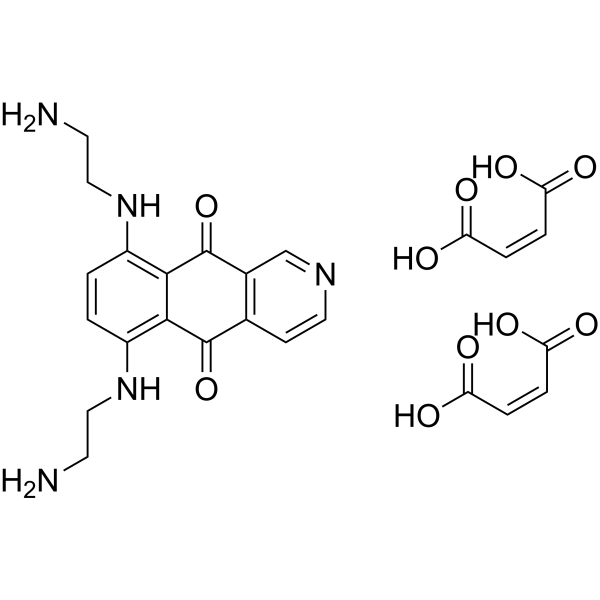
-
- HY-12484
-
BMH-21
5 Publications Verification
|
DNA/RNA Synthesis
|
Cancer
|
|
BMH-21 is a first-in-class DNA intercalator which inhibits RNA polymerase I (Pol I) transcription. BMH-21 possesses anticancer activity .
|
-

-
- HY-13727
-
|
BBR 2778 free base
|
Topoisomerase
|
Cancer
|
|
Pixantrone (BBR 2778 (free base)), a mitoxantrone analog, is a topoisomerase II inhibitor and DNA intercalator, with anti-tumor activity.
|
-
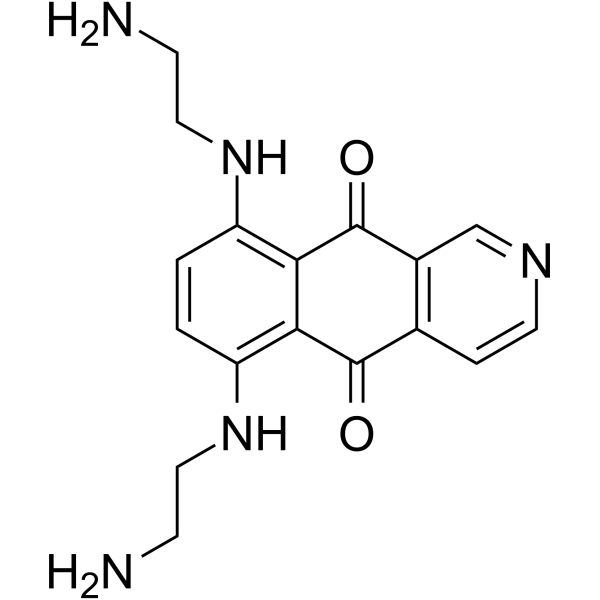
-
- HY-13727B
-
|
BBR 2778 hydrochloride
|
Topoisomerase
|
Cancer
|
|
Pixantrone (BBR 2778 (free base)) hydrochloride, a mitoxantrone analog, is a topoisomerase II inhibitor and DNA intercalator, with anti-tumor activity .
|
-

-
- HY-162381
-
|
|
Topoisomerase
|
Cancer
|
|
Topoisomerase II inhibitor 19 (compound 5h) is a DNA intercalator and topoisomerase II inhibitor (IC50 value of 0.34 μM). Topoisomerase II inhibitor 19 would induce detectable potent damage in ctDNA .
|
-
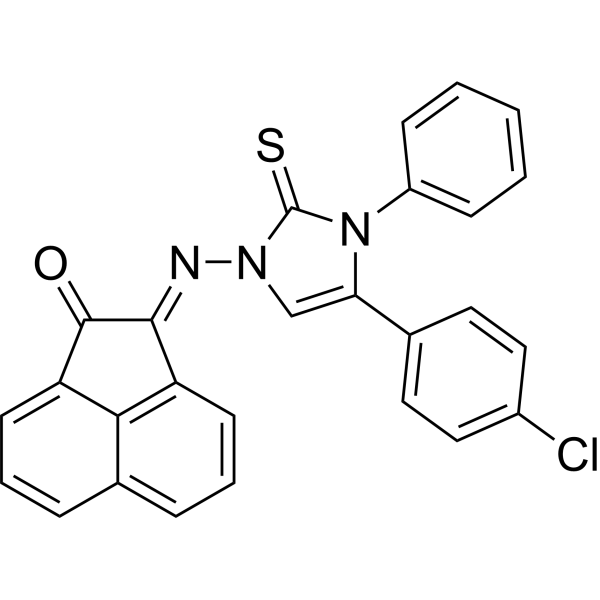
-
- HY-19829
-
|
|
ADC Cytotoxin
Bacterial
Antibiotic
|
Infection
Cancer
|
|
Sandramycin ia a cyclic depsipeptide antibiotic isolated from cultured broth of a Nocardioides sp. Sandramycin is also a DNA intercalator that potently binds DNA and is an ADC cytotoxin. Sandramycin is active against Gram-positive bacteria and has potent antitumor activity .
|
-
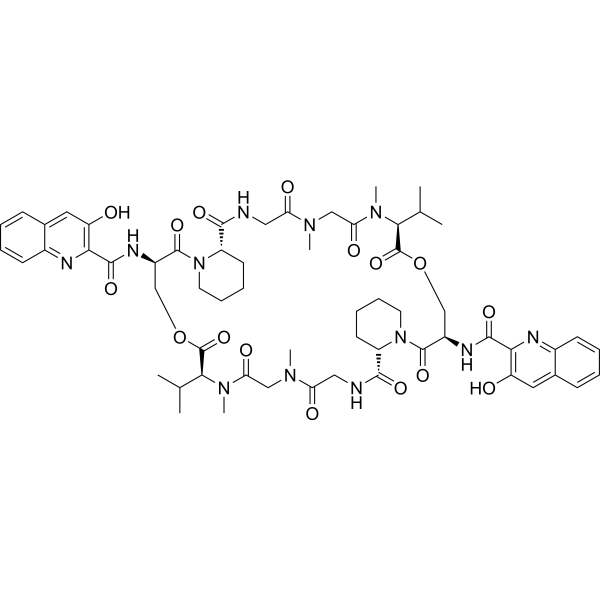
-
- HY-D1246
-
|
|
DNA Stain
|
Others
|
|
Ethidium monoazide bromide is a DNA intercalating fluorescent dye that enters bacteria with damaged membranes. Ethidium monoazide bromide can be covalently linked to DNA by photoactivation. Ethidium monoazide bromide stains only dead cells . Ethidium monoazide (bromide) is a click chemistry reagent, it contains an Azide group and can undergo copper-catalyzed azide-alkyne cycloaddition reaction (CuAAc) with molecules containing Alkyne groups. Strain-promoted alkyne-azide cycloaddition (SPAAC) can also occur with molecules containing DBCO or BCN groups.
|
-
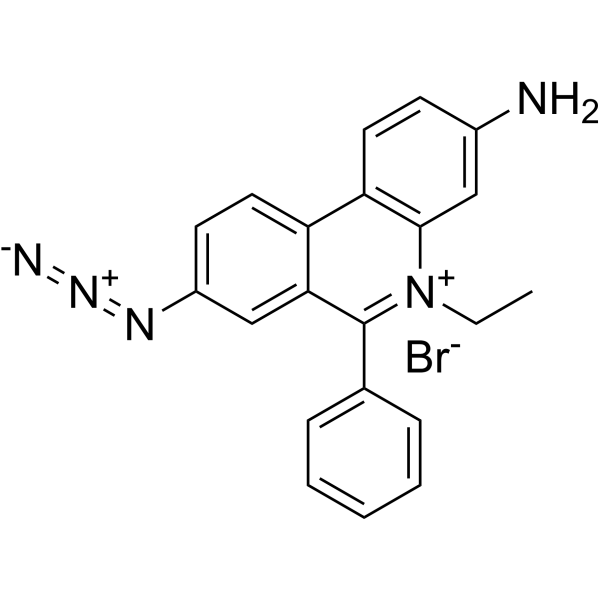
-
- HY-146063
-
|
|
Apoptosis
|
Cancer
|
|
Anticancer agent 54 is a potent anticancer agent. Anticancer agent 54 shows antiproliferative activity. Anticancer agent 54 induces apoptosis and cell cycle arrest at G0/G1 phases. Anticancer agent 54 shows anticancer activity depends on DNA intercalation and ROS generation .
|
-
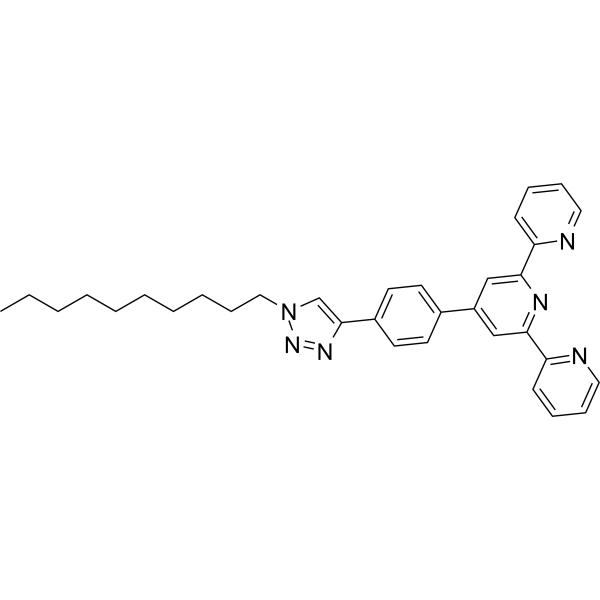
-
- HY-100875
-
|
CL216942
|
Topoisomerase
|
Cancer
|
|
Bisantrene is a highly effective antitumor agent, it exerts its cytotoxicity by affecting DNA intercalation. Bisantrene targets eukaryotic type II topoisomerases. Bisantrene is a substrate of MDR1 .
|
-
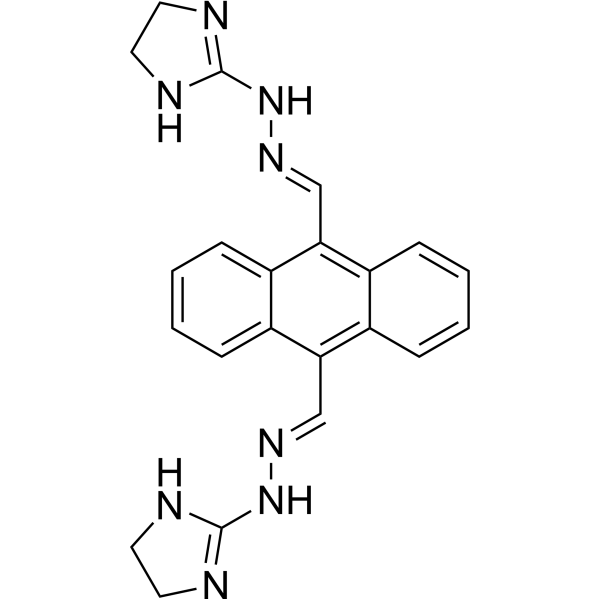
-
- HY-100875A
-
|
CL-216942 dihydrochloride
|
Topoisomerase
|
Cancer
|
|
Bisantrene dihydrochloride is a highly effective antitumor agent, it exerts its cytotoxicity by affecting DNA intercalation. Bisantrene dihydrochloride targets eukaryotic type II topoisomerases. Bisantrene dihydrochloride is a substrate of MDR1 .
|
-
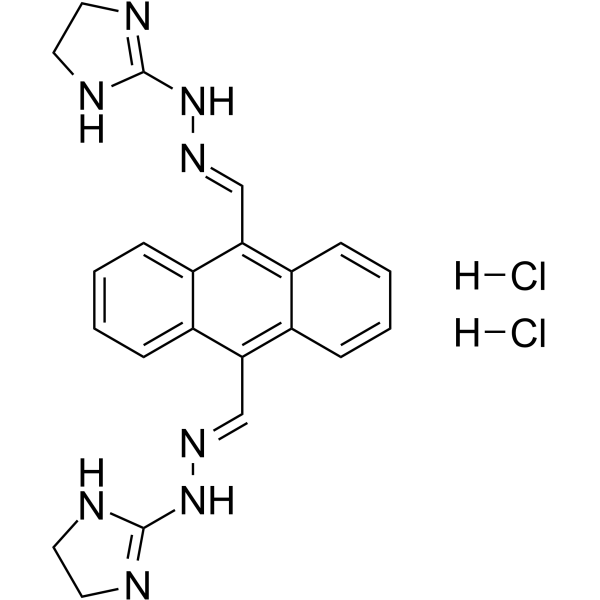
-
- HY-10982
-
|
AS1413
|
Topoisomerase
|
Cancer
|
|
Amonafide is a topoisomerase II inhibitor and DNA intercalator that induces apoptotic signaling by blocking the binding of Topo II to DNA.
|
-
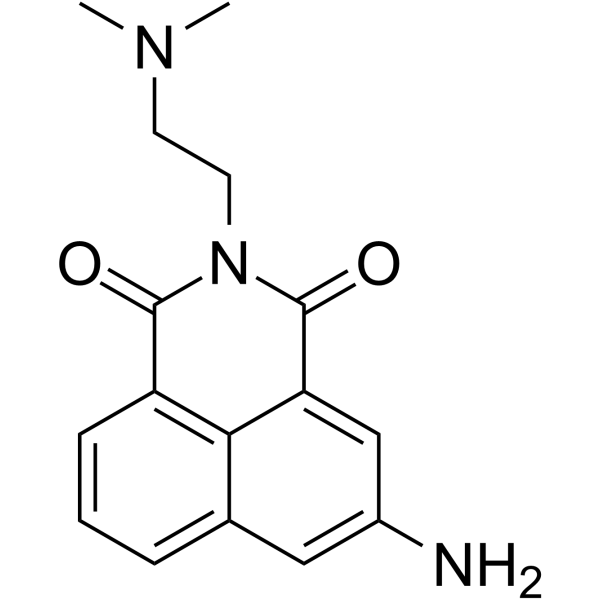
-
- HY-U00337
-
|
|
DNA/RNA Synthesis
|
Cancer
|
|
Datelliptium chloride is a DNA-intercalating agent derived from ellipticine, with anti-tumor activities.
|
-
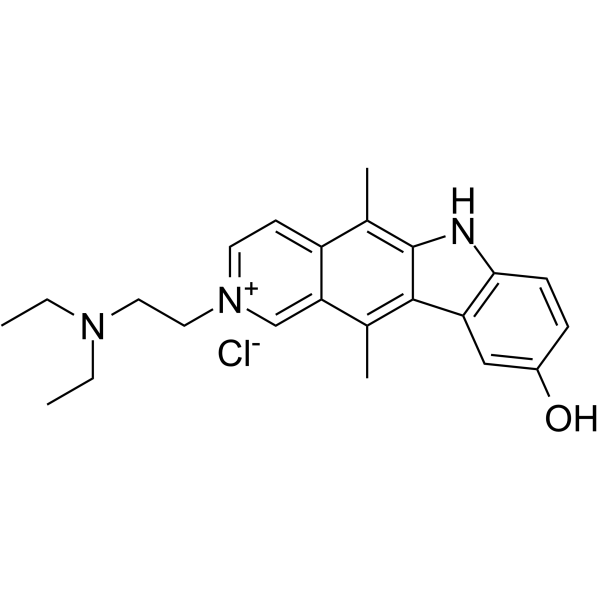
-
- HY-16518
-
|
SNS-595 Hydrochloride; Vosaroxin Hydrochloride; AG 7352 Hydrochloride
|
Topoisomerase
Apoptosis
|
Cancer
|
|
Voreloxin Hydrochloride is a first-in-class topoisomerase II inhibitor that intercalates DNA and induces site-selective DNA DSB, G2 arrest, and apoptosis.
|
-

-
- HY-13550
-
|
NSC 196473; NSC 290813
|
DNA/RNA Synthesis
|
Cancer
|
|
Ametantrone (NSC 196473) is an antitumor agent that intercalates into DNA and induces topoisomerase II (TOP2)-mediated DNA break .
|
-
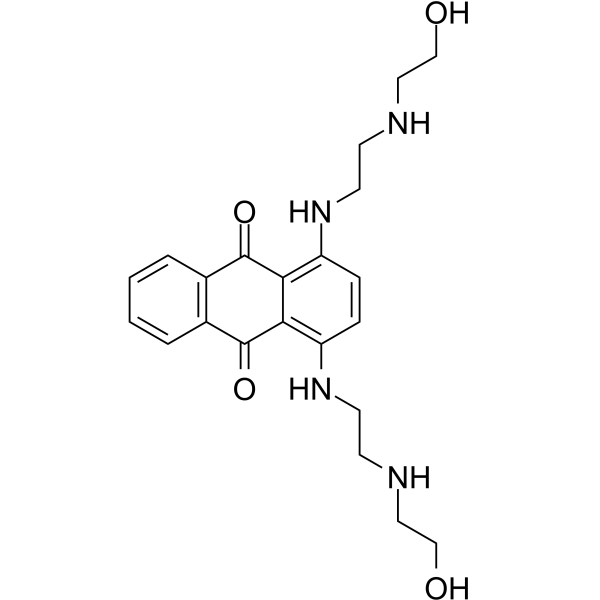
-
- HY-13565
-
|
NSC 655649; BMS 181176; BMY 27557
|
Topoisomerase
|
Cancer
|
|
Becatecarin is a rebeccamycin analog with antitumor effects. Becatecarin intercalates into DNA and inhibites the catalytic activity of topoisomerases I/II.
|
-
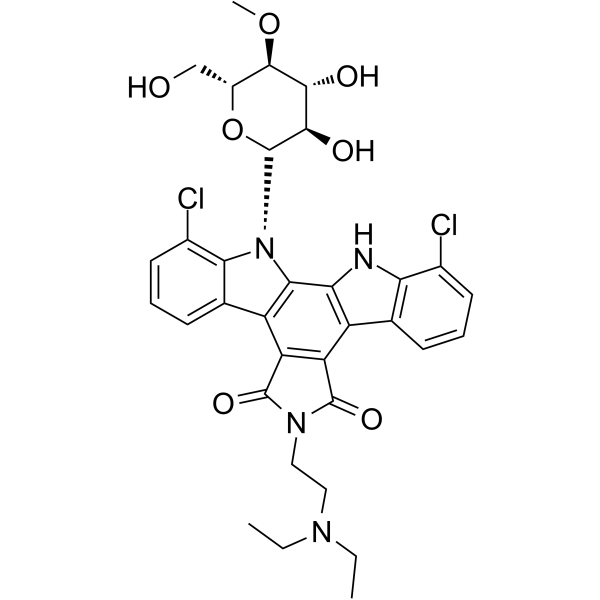
-
- HY-U00248A
-
|
MJ-III65 hydrochloride; NSC706744 hydrochloride
|
Topoisomerase
|
Cancer
|
|
LMP744 hydrochloride (MJ-III65 hydrochloride) is a DNA intercalator and Topoisomerase I (Top1) inhibitor with antitumor activity .
|
-
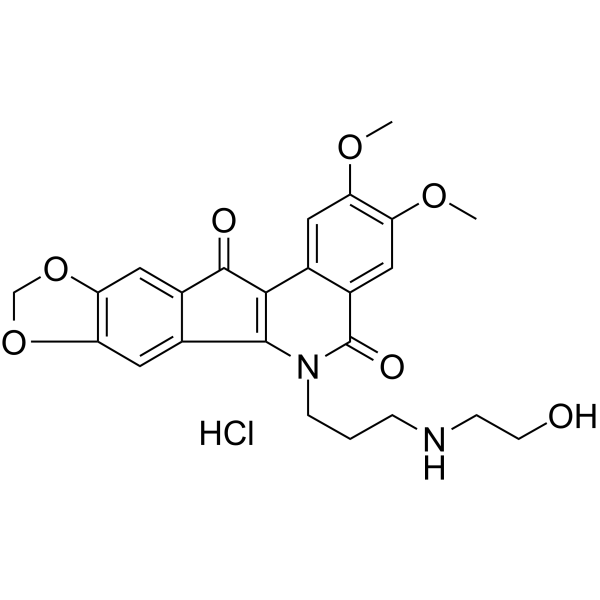
-
- HY-U00248
-
|
MJ-III65; NSC706744
|
Topoisomerase
|
Cancer
|
|
LMP744 (MJ-III65) is a DNA intercalator and Topoisomerase I (Top1) inhibitor with antitumor activity .
|
-
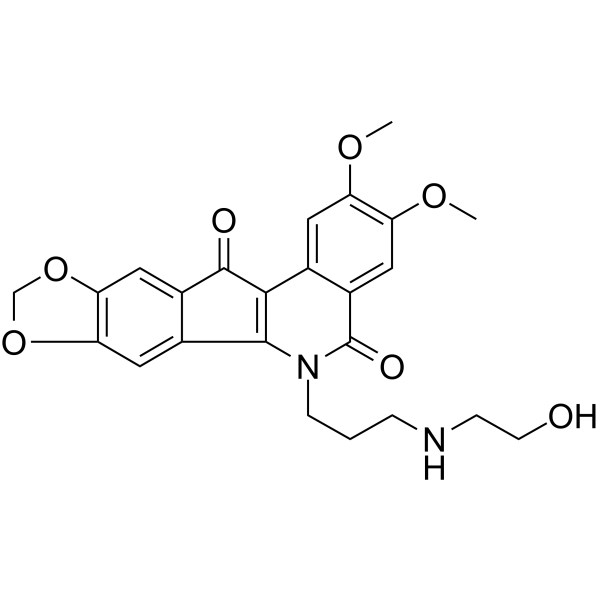
-
- HY-121649
-
|
|
Topoisomerase
|
Cancer
|
|
AQ4 is a topoisomerase II inhibitor and DNA intercalator as a chemically stable cytotoxic agent in many human tumor lines .
|
-
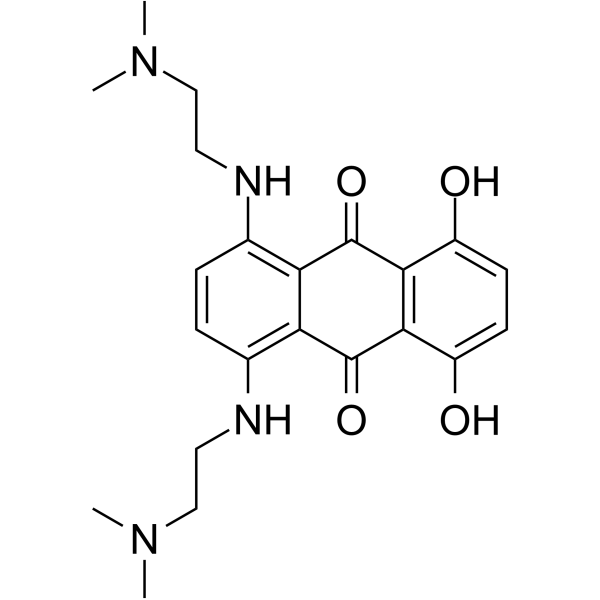
-
- HY-10534
-
|
SNS-595; Vosaroxin; AG 7352
|
Topoisomerase
Apoptosis
|
Cancer
|
|
Voreloxin (SNS-595; Vosaroxin; AG 7352) is a first-in-class topoisomerase II inhibitor that intercalates DNA and induces site-selective DNA DSB, G2 arrest, and apoptosis.
|
-
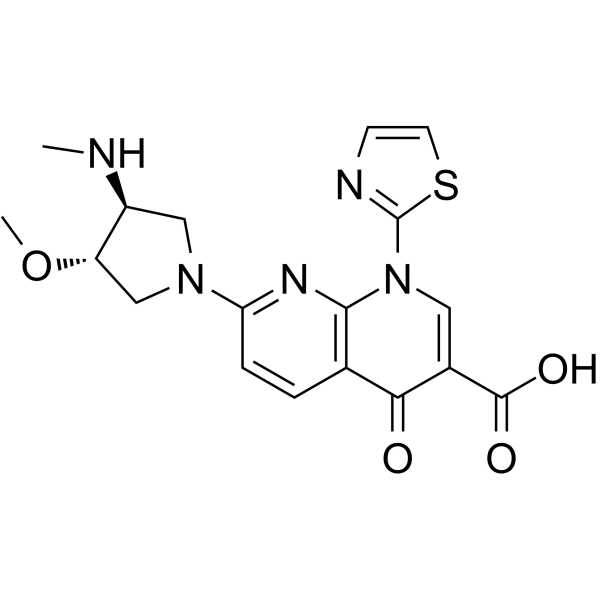
-
- HY-13551
-
|
m-AMSA; acridinyl anisidide
|
Topoisomerase
Autophagy
|
Cancer
|
|
Amsacrine (m-AMSA; acridinyl anisidide) is an inhibitor of topoisomerase II, and acts as an antineoplastic agent which can intercalates into the DNA of tumor cells.
|
-
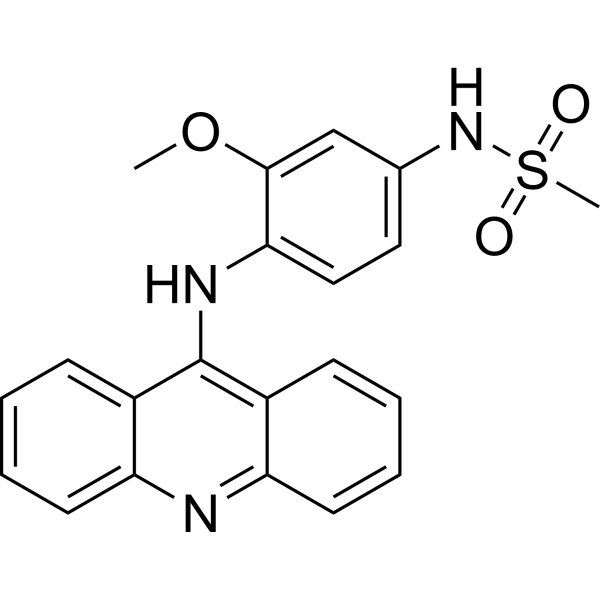
-
- HY-13551A
-
|
m-AMSA hydrochloride; acridinyl anisidide hydrochloride
|
Topoisomerase
Autophagy
|
Cancer
|
|
Amsacrine hydrochloride (m-AMSA hydrochloride; acridinyl anisidide hydrochloride) is an inhibitor of topoisomerase II, and acts as an antineoplastic agent which can intercalates into the DNA of tumor cells.
|
-
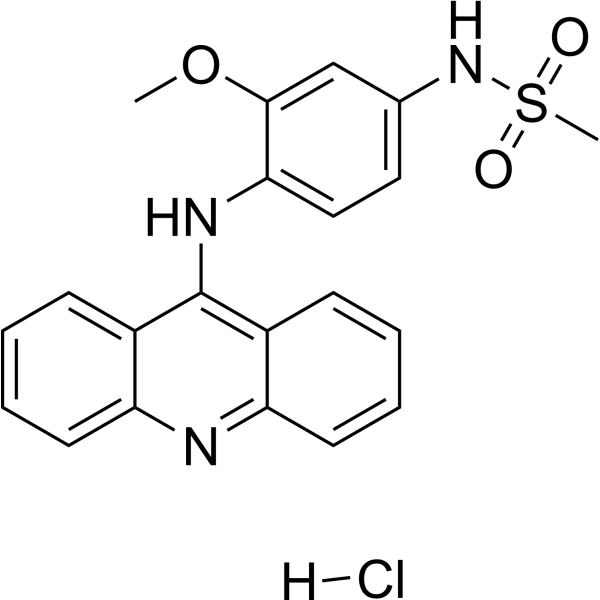
-
- HY-E70209
-
|
|
DNA Methyltransferase
|
Cancer
|
|
EcoRI Methyltransferase is a bacterial sequence-specific S-adenosyl-L-methionine-dependent DNA methyltransferase. EcoRI Methyltransferase relies on a complex conformational mechanism to achieve its remarkable specificity, including DNA bending, base flipping and intercalation into the DNA .
|
-

-
- HY-126490
-
|
|
Bacterial
Antibiotic
DNA/RNA Synthesis
|
Infection
Cancer
|
|
Phleomycin is an anticancer glycopeptide antibiotic found in Streptomyces verticillus, which cause DNA cleavage. Phleomycin binds and intercalates DNA to damage the integrity of the double helix, which is similar to Bleomycin (HY-17565A) .
|
-
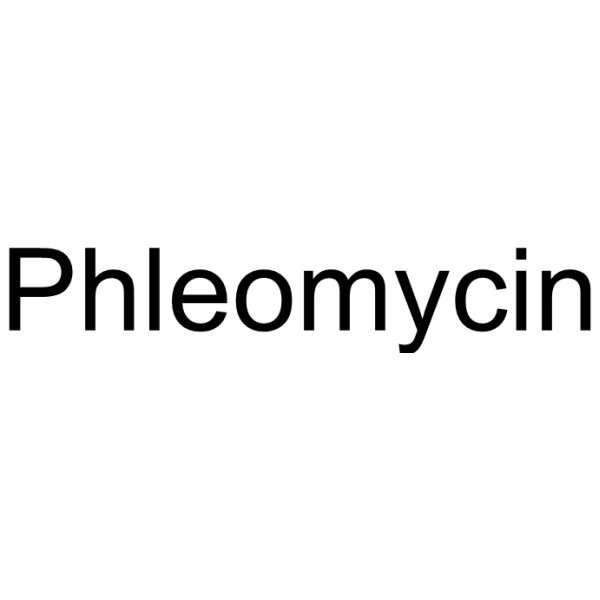
-
- HY-U00337A
-
|
|
DNA/RNA Synthesis
|
Cancer
|
|
Datelliptium chloride hydrochloride is a DNA-intercalating agent derived from Ellipticine (HY-15753). Datelliptium chloride hydrochloride is effective in vivo against a variety of murine solid tumors .
|
-
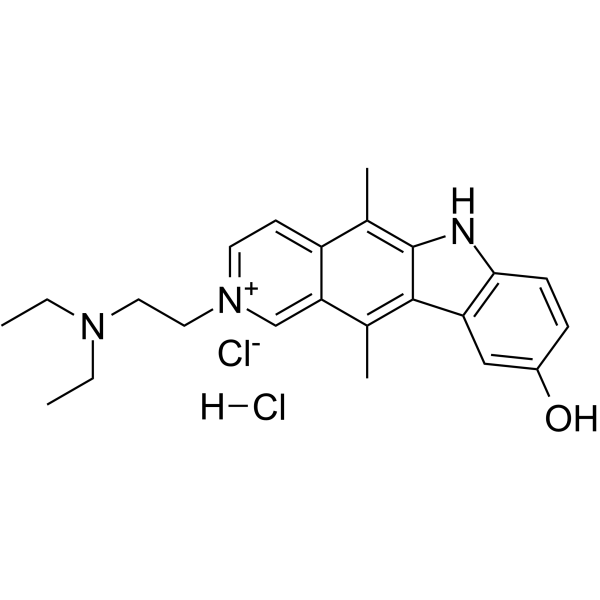
-
- HY-D0917
-
|
|
DNA Stain
|
Cancer
|
|
TO-PRO 1 is a DNA binding fluorochrome, that atached to the surface of the Feraheme (FH) nanoparticle (NP), to obtain a fluorochrome-functionalized NP. TO-PRO 1 binds DNA through intercalation, and acts as a vital fluorochrome for necrotic cells .
|
-
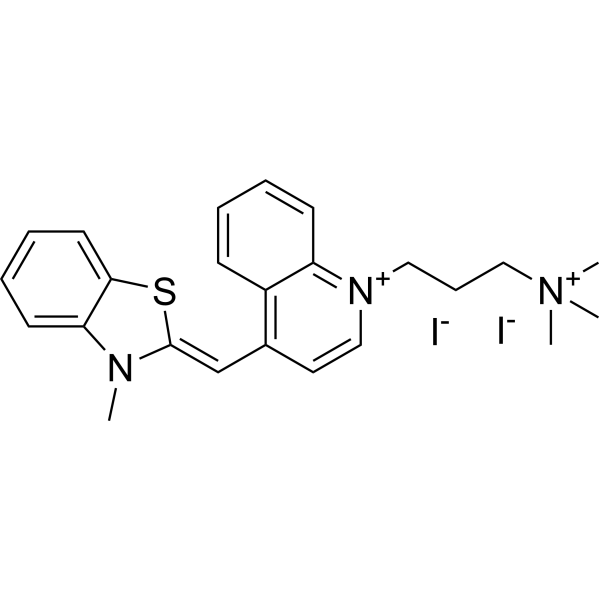
-
- HY-119182
-
|
NSC 300288
|
DNA/RNA Synthesis
|
Cancer
|
|
Mitonafide (NSC 300288) is a cytostatic agent. Mitonafide binds to double-stranded DNA through intercalation, and inhibits DNA and RNA synthesis. Mitonafide is an antitumor agent that can be used in the research of cancers, such as non-small cell lung cancer (NSCLC), leukemia .
|
-

-
- HY-145859
-
-
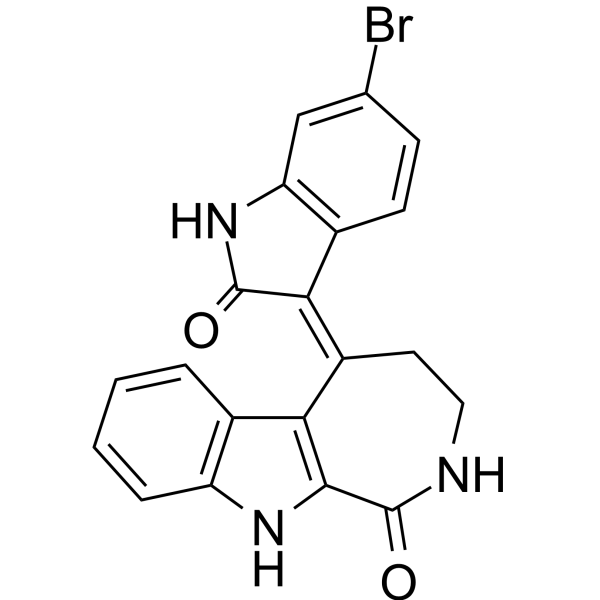
-
- HY-147877
-
|
|
Topoisomerase
|
Cancer
|
|
Topoisomerase II inhibitor 12 (Compound 8c) is a topoisomerase II (topo II) inhibitor, working as a DNA non-intercalator. Topoisomerase II inhibitor 12 shows antineoplastic activity .
|
-
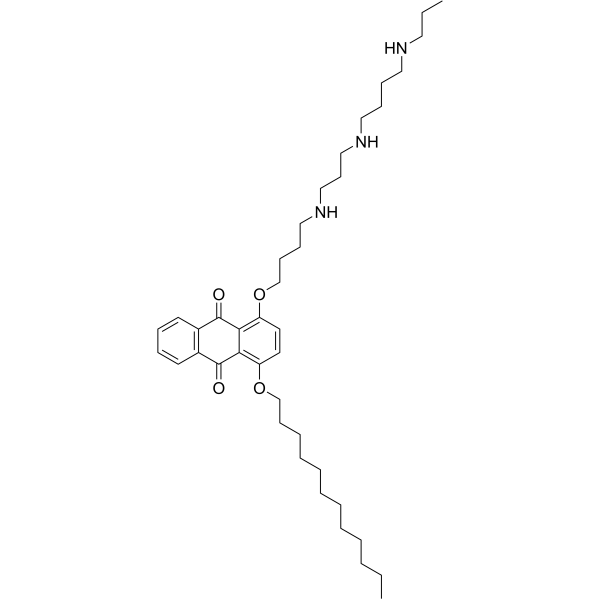
-
- HY-145657
-
|
BQQ
|
Others
|
Others
|
|
Benzoquinoquinoxaline (BQQ) is a heterocyclic compound with an aminoalkyl side chain. Benzoquinoquinoxaline preferentially binds to DNA triplex structures, intercalates between the bases, thus, stabilising the triplex conformation. Conjugation of Benzoquinoquinoxaline to 1,10-phenanthroline specifically binds and cleaves double strand DNA at the site of formation of a triplex structure .
|
-
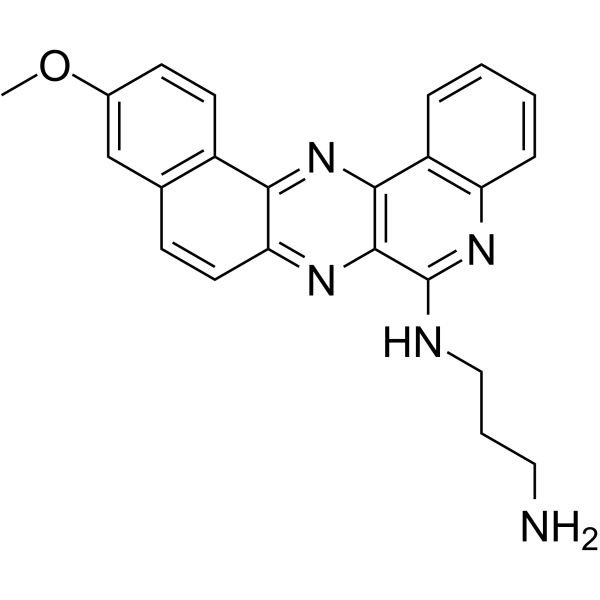
-
- HY-108999A
-
|
BWA770U
|
DNA/RNA Synthesis
|
Cancer
|
|
Crisnatol (BWA770U) is an orally active and anticancer agent, and a member of the arylmethylaminopropanediol class of DNA intercalators. Crisnatol shows in vitro cytotoxicity against human breast cancer cells, but not normal human skin fibroblasts .
|
-
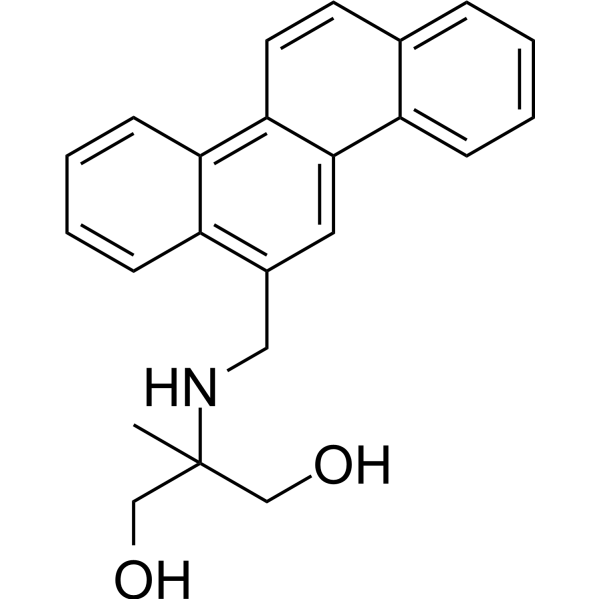
-
- HY-108999
-
|
BWA770U mesylate
|
DNA/RNA Synthesis
|
Cancer
|
|
Crisnatol (BWA770U) mesylate is an orally active and anticancer agent, and a member of the arylmethylaminopropanediol class of DNA intercalators. Crisnatol mesylate shows in vitro cytotoxicity against human breast cancer cells, but not normal human skin fibroblasts .
|
-
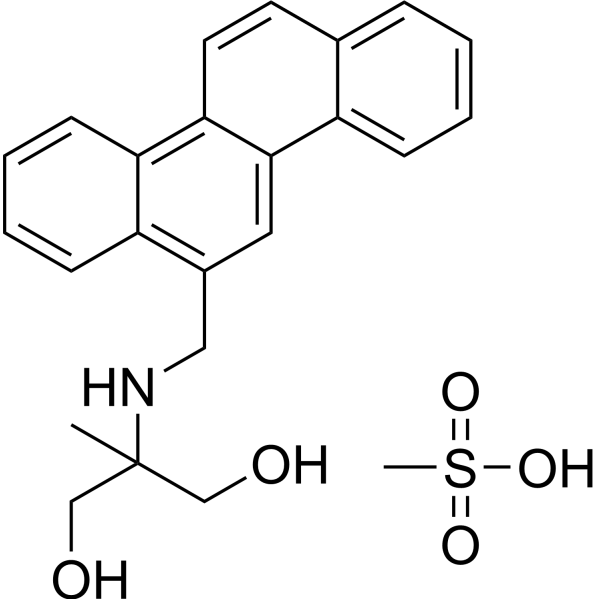
-
- HY-B1099
-
|
|
DNA/RNA Synthesis
Topoisomerase
Parasite
|
Infection
|
|
Hycanthone is a thioxanthenone DNA intercalator and inhibits RNA synthesis as well as the DNA topoisomerases I and II. Hycanthone inhibits nucleic acid biosynthesis and inhibits apurinic endonuclease-1 (APE1) by direct protein binding with a KD of 10 nM. Hycanthone is a bioactive metabolite of Lucanthone (HY-B2098) and has anti-schistosomal agent .
|
-

-
- HY-152187
-
|
|
Topoisomerase
Apoptosis
|
Others
|
|
Topoisomerase IIα-IN-5 is a topoisomerase II (topo II) α catalytic inhibitor. Topoisomerase IIα-IN-5 intercalates into DNA and binds to the DNA minor groove. Topoisomerase IIα-IN-5 exhibits better efficacy and less genotoxicity than Etoposide (HY-13629) .
|
-
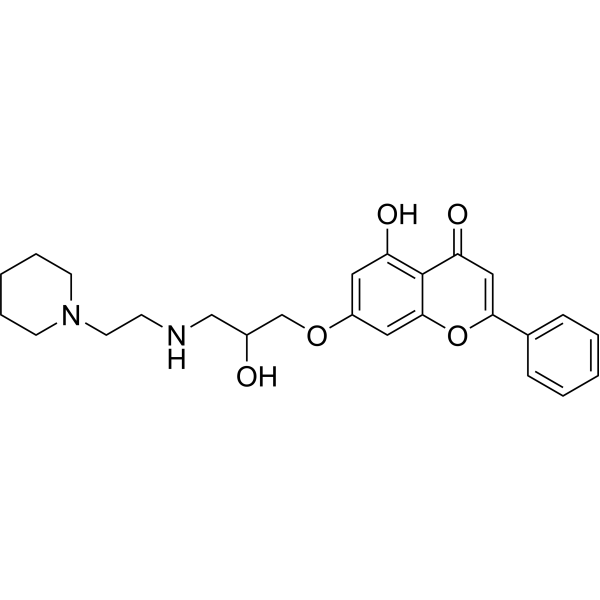
-
- HY-16189
-
|
NSC 264137; Celiptium
|
DNA Stain
|
Cancer
|
|
Elliptinium acetate (NSC 264137) is a DNA intercalating agent that is highly cytotoxic to L1 210 cells and covalently binds to nucleic acids from L1210 cells. Elliptinium acetate can be used in cancer research, particularly in metastatic breast cancer .
|
-

-
- HY-135218
-
|
|
DNA/RNA Synthesis
|
Cancer
|
|
AV-153, a 1,4-dihydropyridine (1,4-DHP) derivative, is an antimutagenic. AV-153 intercalates to DNA in a single strand break and reduces DNA damage, stimulates DNA repair in human cells in vitro. AV-153 interacts with thymine and cytosine and has an influence on poly(ADP)ribosylation. AV-153 has anti-cancer activity .
|
-
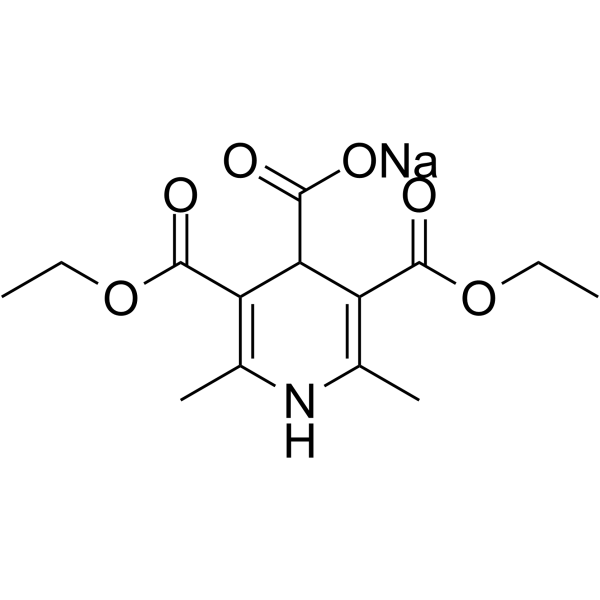
-
- HY-B1741
-
|
3,6-Diaminoacridine
|
|
|
|
Proflavine, an acridine dye, is a known DNA intercalating agent. Anti-microbial agent . Proflavine behaves as a pore blocker for Kir3.2. Proflavine is a potential lead compound for Kir3.2-associated neurological diseases .
|
-

-
- HY-D0226
-
|
1,4-Dihydroxyanthraquinone
|
DNA/RNA Synthesis
Fungal
|
Infection
Cancer
|
|
Quinizarin (1,4-Dihydroxyanthraquinone), a part of the anticancer agents such as Doxorubicin, Daunorubicin, and Adriamycin, interacts with DNA by intercalating mode (Kd=86.1 μM). Quinizarin is used as a fungicide and pesticide chemical and has shown the ability to inhibit tumor cell growth .
|
-
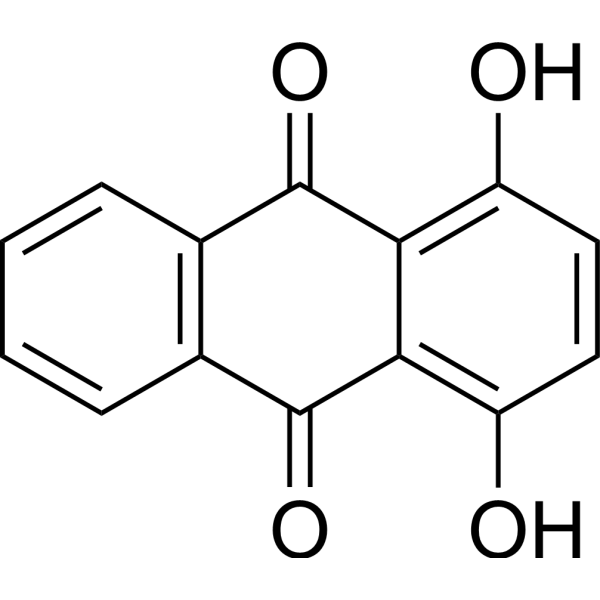
-
- HY-B0883
-
|
Proflavin hemisulfate; 3,6-Diaminoacridine hemisulfate
|
Bacterial
Potassium Channel
Autophagy
|
Infection
Cancer
|
|
Proflavine hemisulfate, an acridine dye, is a known DNA intercalating agent. Anti-microbial agent . Proflavine hemisulfate behaves as a pore blocker for Kir3.2. Proflavine hemisulfate is a potential lead compound for Kir3.2-associated neurological diseases .
|
-
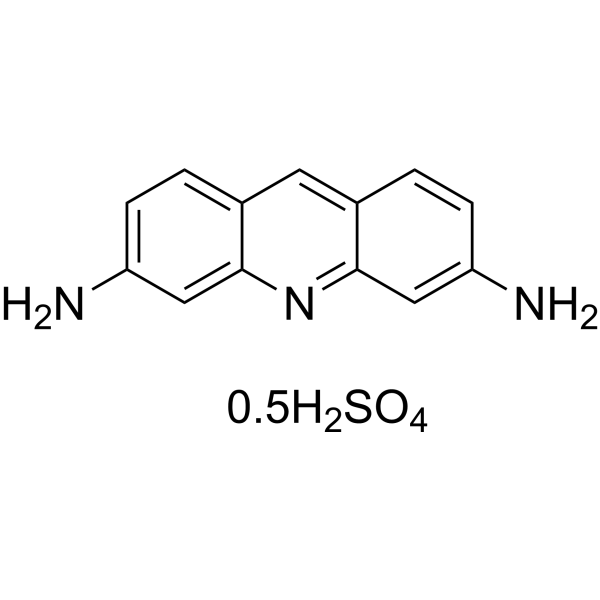
-
- HY-147801
-
|
|
Topoisomerase
Apoptosis
|
Cancer
|
|
Topoisomerase IIα-IN-3 (Compound 12c) is a DNA intercalative topoisomerase-IIα inhibitor. Topoisomerase IIα-IN-3 arrests cell cycle at the G0/G1 phase and induces apoptosis .
|
-
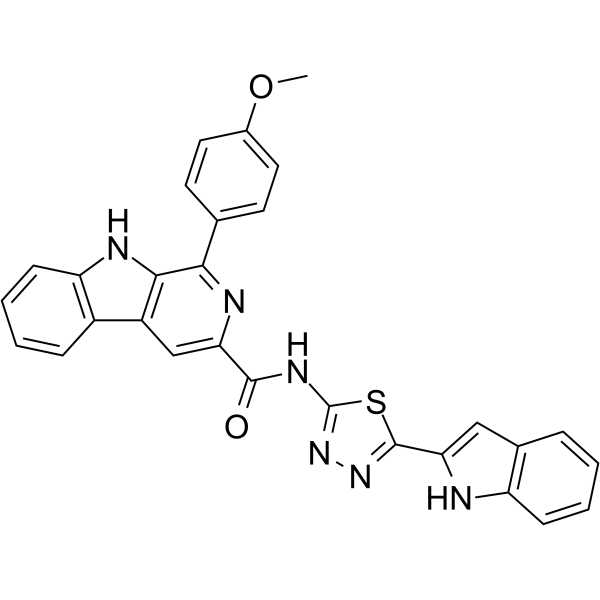
-
- HY-135218A
-
|
|
DNA/RNA Synthesis
|
Cancer
|
|
AV-153 free base, a 1,4-dihydropyridine (1,4-DHP) derivative, is an antimutagenic. AV-153 free base intercalates to DNA in a single strand break and reduces DNA damage, stimulates DNA repair in human cells in vitro. AV-153 free base interacts with thymine and cytosine and has an influence on poly(ADP)ribosylation. AV-153 free base has anti-cancer activity .
|
-
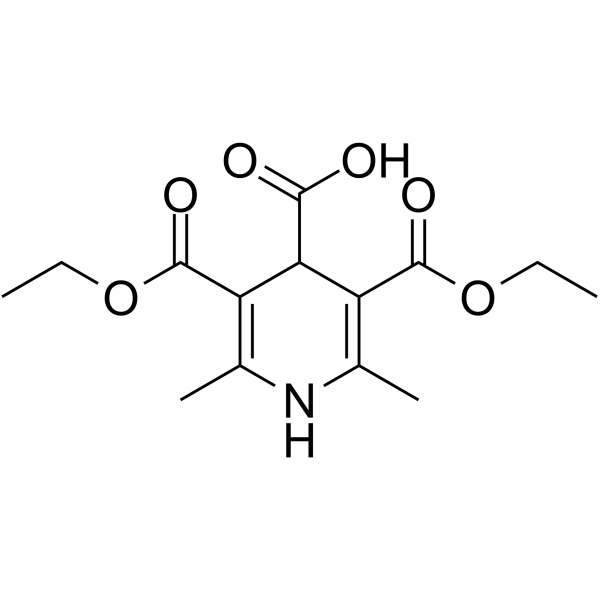
-
- HY-15794
-
|
Methoxymorpholinyl doxorubicin; FCE 23762; PNU 152243
|
G-quadruplex
|
Cancer
|
|
Nemorubicin (Methoxymorpholinyl doxorubicin) is a Doxorubicin derivative with potent antitumor activity. Nemorubicin is highly cytotoxic to a variety of tumor cell lines presenting a multidrug-resistant phenotype. Nemorubicin not only intercalate into the duplex DNA, but also result in significant ligands for G-quadruplex DNA segments, stabilizing their structure. Nemorubicin requirs an intact nucleotide excision repair (NER) system to exert its activity .
|
-
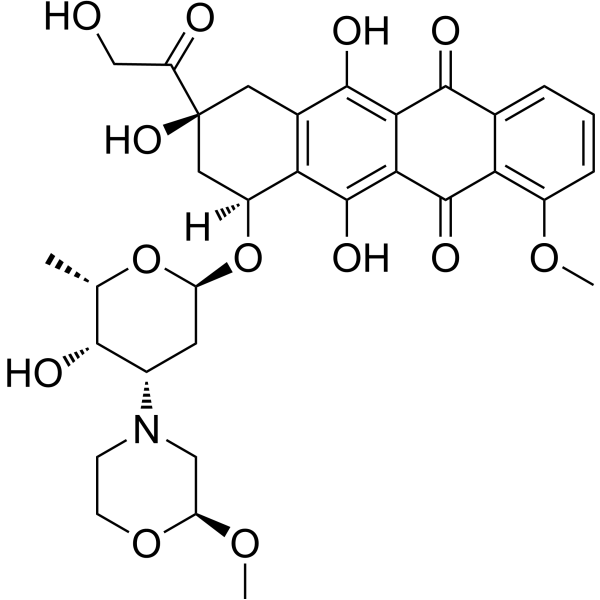
-
- HY-B1741A
-
|
3,6-Diaminoacridine dihydrochloride
|
Bacterial
Fluorescent Dye
|
Infection
|
|
Proflavine (3,6-Diaminoacridine) dihydrochloride, an acridine dye, is a DNA intercalating agent and Anti-microbial agent. Proflavine dihydrochloride behaves as a pore blocker for Kir3.2. Proflavine dihydrochloride is a potential lead compound for Kir3.2-associated neurological diseases .
|
-
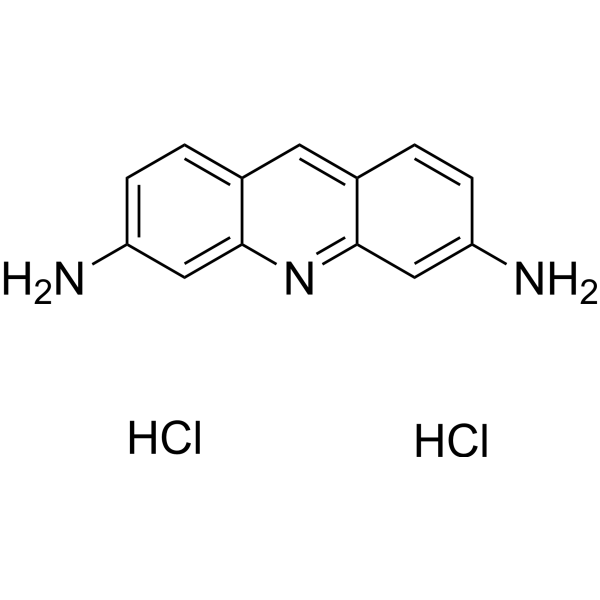
-
- HY-D0215
-
|
Safranine T
|
Fluorescent Dye
|
Others
|
|
Safranin (Safranin T) is an important and classical phenazinium dye. Safranin has been extensively used in the academic field as a spectroscopic probe and indicator. Safranin possesses a planar structure and cationic charge. It can readily intercalate into biological macromolecules, including DNA and proteins. Safranin can be used as a redox indicator in the determination of metal ion concentration .
|
-
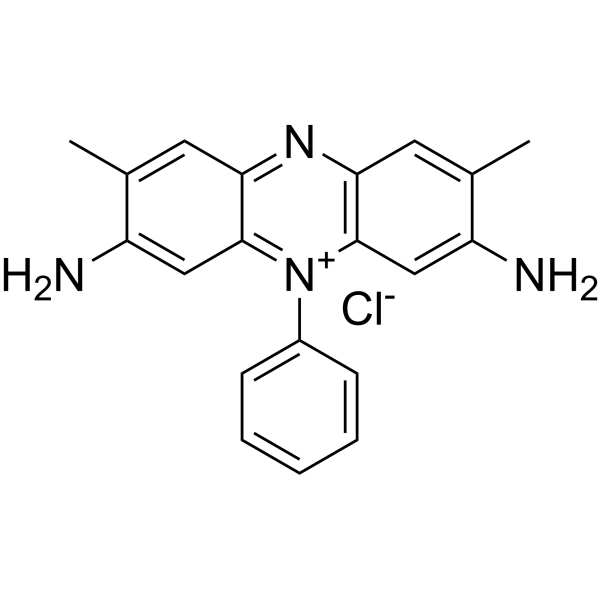
-
- HY-15794G
-
|
Methoxymorpholinyl doxorubicin; FCE 23762; PNU 152243
|
G-quadruplex
|
Cancer
|
|
Nemorubicin (Methoxymorpholinyl doxorubicin) GMP is a GMP-class Nemorubicin (HY-15794). Nemorubicin is a Doxorubicin derivative with potent antitumor activity. Nemorubicin is highly cytotoxic to a variety of tumor cell lines presenting a multidrug-resistant phenotype. Nemorubicin not only intercalate into the duplex DNA, but also result in significant ligands for G-quadruplex DNA segments, stabilizing their structure. Nemorubicin requirs an intact nucleotide excision repair (NER) system to exert its activity .
|
-
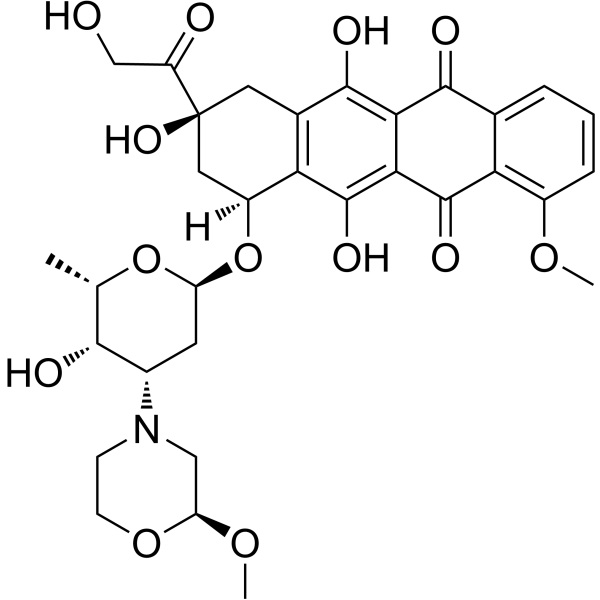
-
- HY-146189
-
|
|
Topoisomerase
Apoptosis
|
Cancer
|
|
Topoisomerase II inhibitor 9 (Compound 19b) is a Topo II inhibitor with an IC50 of 0.97 μM. Topoisomerase II inhibitor 9 is also a classical DNA-intercalator with an IC50 of 43.51 μM. Topoisomerase II inhibitor 9 arrests the cell cycle at the G2/M phase and induces apoptosis in Hep G‐2 cells .
|
-

-
- HY-D0971
-
|
Pyronine G; C.I. 45005
|
DNA Stain
|
Others
|
|
Pyronin Y (Pyronine G) is a cationic dye that intercalates RNA and has been used to target cell structures including RNA, DNA and organelles. Pyronin Y forms fluorescent complexes with double-stranded nucleic acids (especially RNA) enabling semi-quantitative analysis of cellular RNA. Pyronin Y can be used to identify specific RNA subspecies of ribonuclear proteins complexes in live cells .
|
-

-
- HY-12404
-
|
Diminazene diaceturate
|
Parasite
Angiotensin-converting Enzyme (ACE)
|
Infection
Inflammation/Immunology
|
|
Diminazene aceturate (Diminazene diaceturate) is an anti-trypanosome agent for livestock. The main biochemical mechanism of the trypanocidal actions of Diminazene aceturate is by binding to trypanosomal kinetoplast DNA (kDNA) in a non-intercalative manner through specific interaction with sites rich in adenine-thymine base pairs. Diminazene aceturate is also an angiotensin-converting enzyme 2 (ACE2) activator and has strong and potent anti-inflammatory properties .
|
-

-
- HY-151453
-
|
|
Topoisomerase
Apoptosis
|
Cancer
|
|
Topoisomerase IIα-IN-4 (F2) is a non-intercalative ATP-competitive human DNA topoisomerase II inhibitor with an IC50 value of 3.8 and 10.1 μM for TopoIIα and TopoIIβ, respectively. Topoisomerase IIα-IN-4 shows potent potency in apoptosis induction and cell cycle arrest in HepG2 cells. Topoisomerase IIα-IN-4 exhibits strong antitumor activities against human cancer cell lines, it can be used for the research of cancer .
|
-
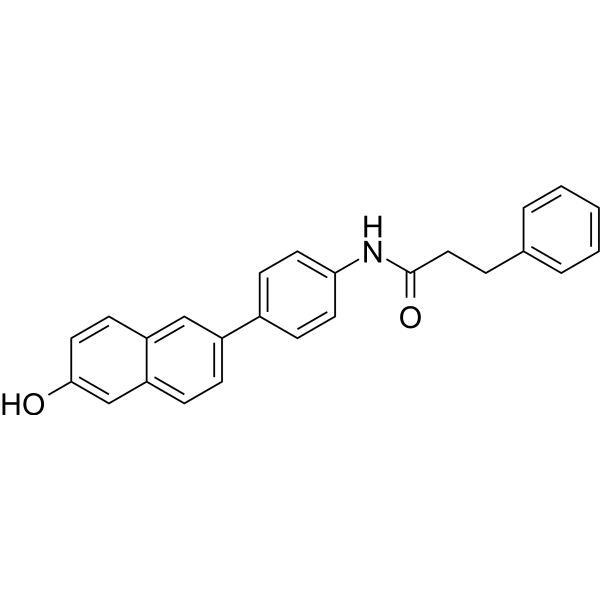
| Cat. No. |
Product Name |
Type |
-
- HY-D0226
-
|
1,4-Dihydroxyanthraquinone
|
Fluorescent Dyes/Probes
|
|
Quinizarin (1,4-Dihydroxyanthraquinone), a part of the anticancer agents such as Doxorubicin, Daunorubicin, and Adriamycin, interacts with DNA by intercalating mode (Kd=86.1 μM). Quinizarin is used as a fungicide and pesticide chemical and has shown the ability to inhibit tumor cell growth .
|
-
- HY-B0883
-
|
Proflavin hemisulfate; 3,6-Diaminoacridine hemisulfate
|
Fluorescent Dyes/Probes
|
|
Proflavine hemisulfate, an acridine dye, is a known DNA intercalating agent. Anti-microbial agent . Proflavine hemisulfate behaves as a pore blocker for Kir3.2. Proflavine hemisulfate is a potential lead compound for Kir3.2-associated neurological diseases .
|
-
- HY-D0215
-
|
Safranine T
|
Dyes
|
|
Safranin (Safranin T) is an important and classical phenazinium dye. Safranin has been extensively used in the academic field as a spectroscopic probe and indicator. Safranin possesses a planar structure and cationic charge. It can readily intercalate into biological macromolecules, including DNA and proteins. Safranin can be used as a redox indicator in the determination of metal ion concentration .
|
-
- HY-D1246
-
|
|
DNA Stain
|
|
Ethidium monoazide bromide is a DNA intercalating fluorescent dye that enters bacteria with damaged membranes. Ethidium monoazide bromide can be covalently linked to DNA by photoactivation. Ethidium monoazide bromide stains only dead cells . Ethidium monoazide (bromide) is a click chemistry reagent, it contains an Azide group and can undergo copper-catalyzed azide-alkyne cycloaddition reaction (CuAAc) with molecules containing Alkyne groups. Strain-promoted alkyne-azide cycloaddition (SPAAC) can also occur with molecules containing DBCO or BCN groups.
|
-
- HY-D0917
-
|
|
DNA Stain
|
|
TO-PRO 1 is a DNA binding fluorochrome, that atached to the surface of the Feraheme (FH) nanoparticle (NP), to obtain a fluorochrome-functionalized NP. TO-PRO 1 binds DNA through intercalation, and acts as a vital fluorochrome for necrotic cells .
|
-
- HY-15794G
-
|
Methoxymorpholinyl doxorubicin (GMP); FCE 23762 (GMP); PNU 152243 (GMP)
|
Fluorescent Dye
|
|
Nemorubicin (Methoxymorpholinyl doxorubicin) GMP is a GMP-class Nemorubicin (HY-15794). Nemorubicin is a Doxorubicin derivative with potent antitumor activity. Nemorubicin is highly cytotoxic to a variety of tumor cell lines presenting a multidrug-resistant phenotype. Nemorubicin not only intercalate into the duplex DNA, but also result in significant ligands for G-quadruplex DNA segments, stabilizing their structure. Nemorubicin requirs an intact nucleotide excision repair (NER) system to exert its activity .
|
-
- HY-D0971
-
|
Pyronine G; C.I. 45005
|
Fluorescent Dyes/Probes
|
|
Pyronin Y (Pyronine G) is a cationic dye that intercalates RNA and has been used to target cell structures including RNA, DNA and organelles. Pyronin Y forms fluorescent complexes with double-stranded nucleic acids (especially RNA) enabling semi-quantitative analysis of cellular RNA. Pyronin Y can be used to identify specific RNA subspecies of ribonuclear proteins complexes in live cells .
|
| Cat. No. |
Product Name |
Type |
-
- HY-15794G
-
|
Methoxymorpholinyl doxorubicin (GMP); FCE 23762 (GMP); PNU 152243 (GMP)
|
Biochemical Assay Reagents
|
|
Nemorubicin (Methoxymorpholinyl doxorubicin) GMP is a GMP-class Nemorubicin (HY-15794). Nemorubicin is a Doxorubicin derivative with potent antitumor activity. Nemorubicin is highly cytotoxic to a variety of tumor cell lines presenting a multidrug-resistant phenotype. Nemorubicin not only intercalate into the duplex DNA, but also result in significant ligands for G-quadruplex DNA segments, stabilizing their structure. Nemorubicin requirs an intact nucleotide excision repair (NER) system to exert its activity .
|
| Cat. No. |
Product Name |
Category |
Target |
Chemical Structure |
| Cat. No. |
Product Name |
|
Classification |
-
- HY-D1246
-
|
|
|
Azide
|
|
Ethidium monoazide bromide is a DNA intercalating fluorescent dye that enters bacteria with damaged membranes. Ethidium monoazide bromide can be covalently linked to DNA by photoactivation. Ethidium monoazide bromide stains only dead cells . Ethidium monoazide (bromide) is a click chemistry reagent, it contains an Azide group and can undergo copper-catalyzed azide-alkyne cycloaddition reaction (CuAAc) with molecules containing Alkyne groups. Strain-promoted alkyne-azide cycloaddition (SPAAC) can also occur with molecules containing DBCO or BCN groups.
|
Your information is safe with us. * Required Fields.
Inquiry Information
- Product Name:
- Cat. No.:
- Quantity:
- MCE Japan Authorized Agent:
























































